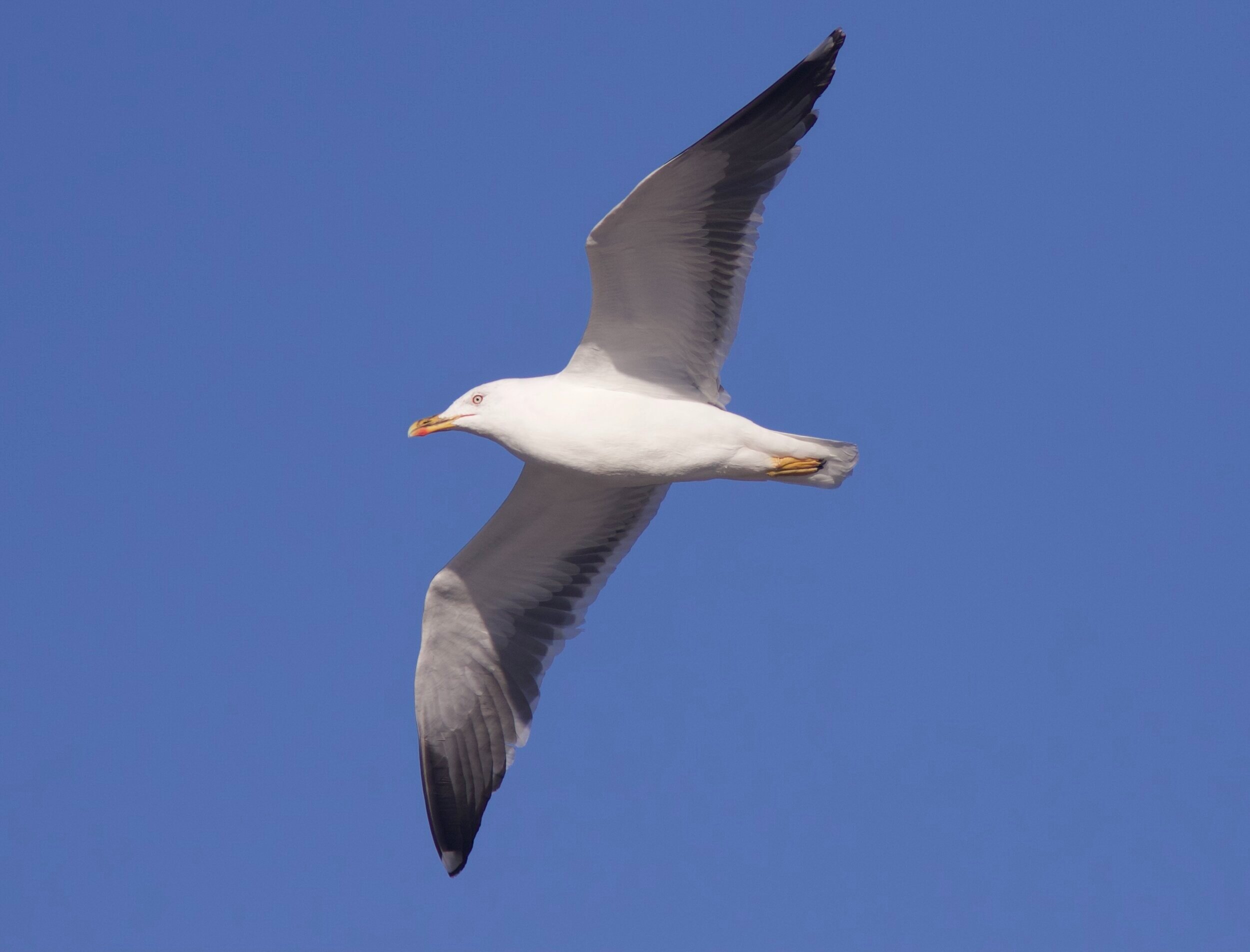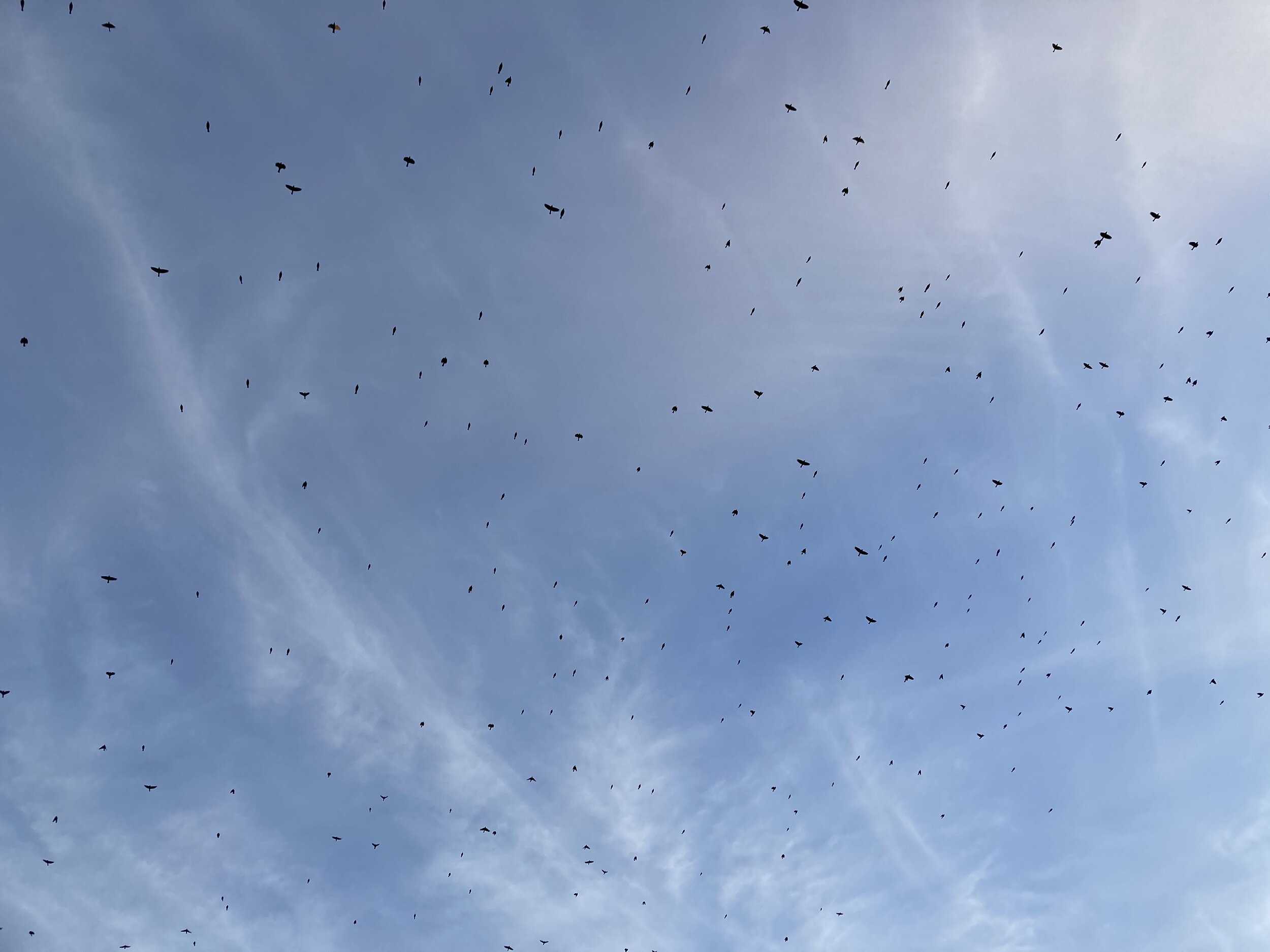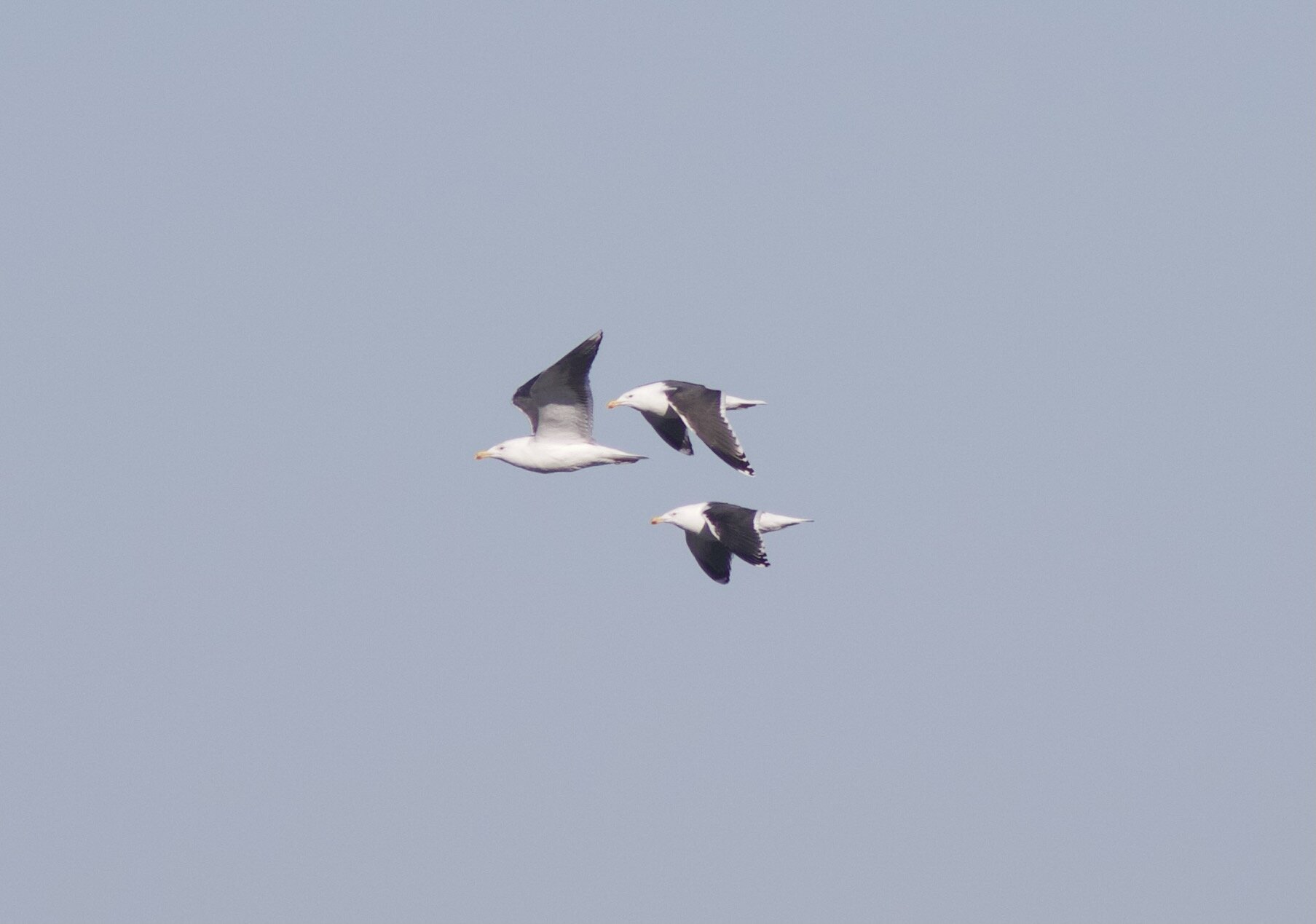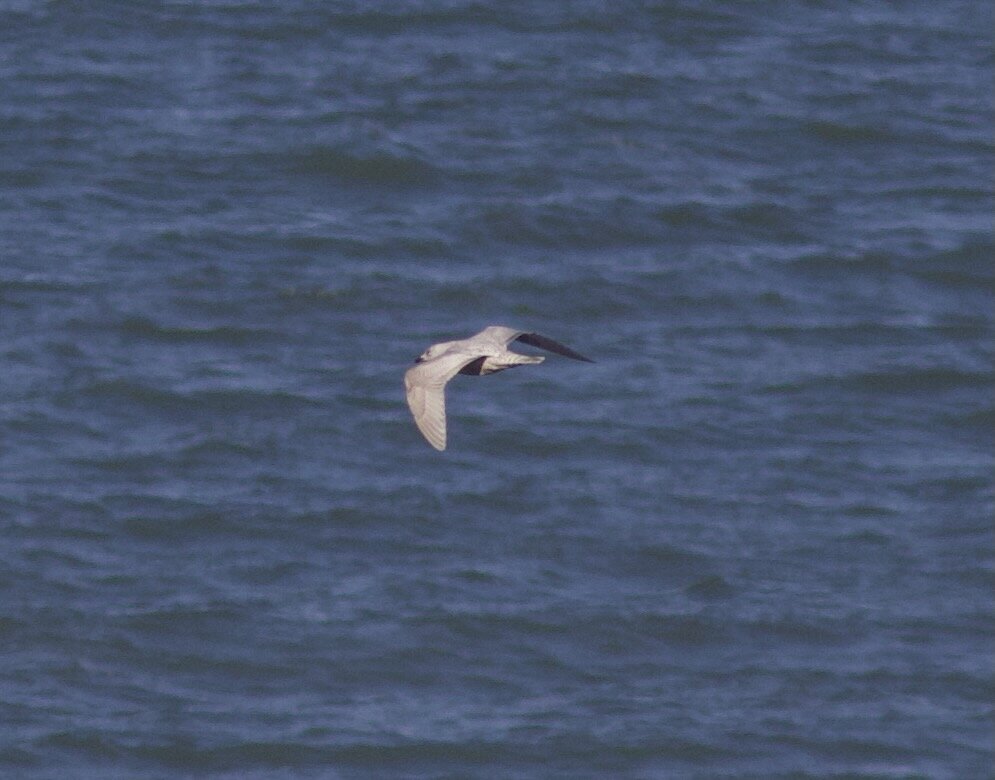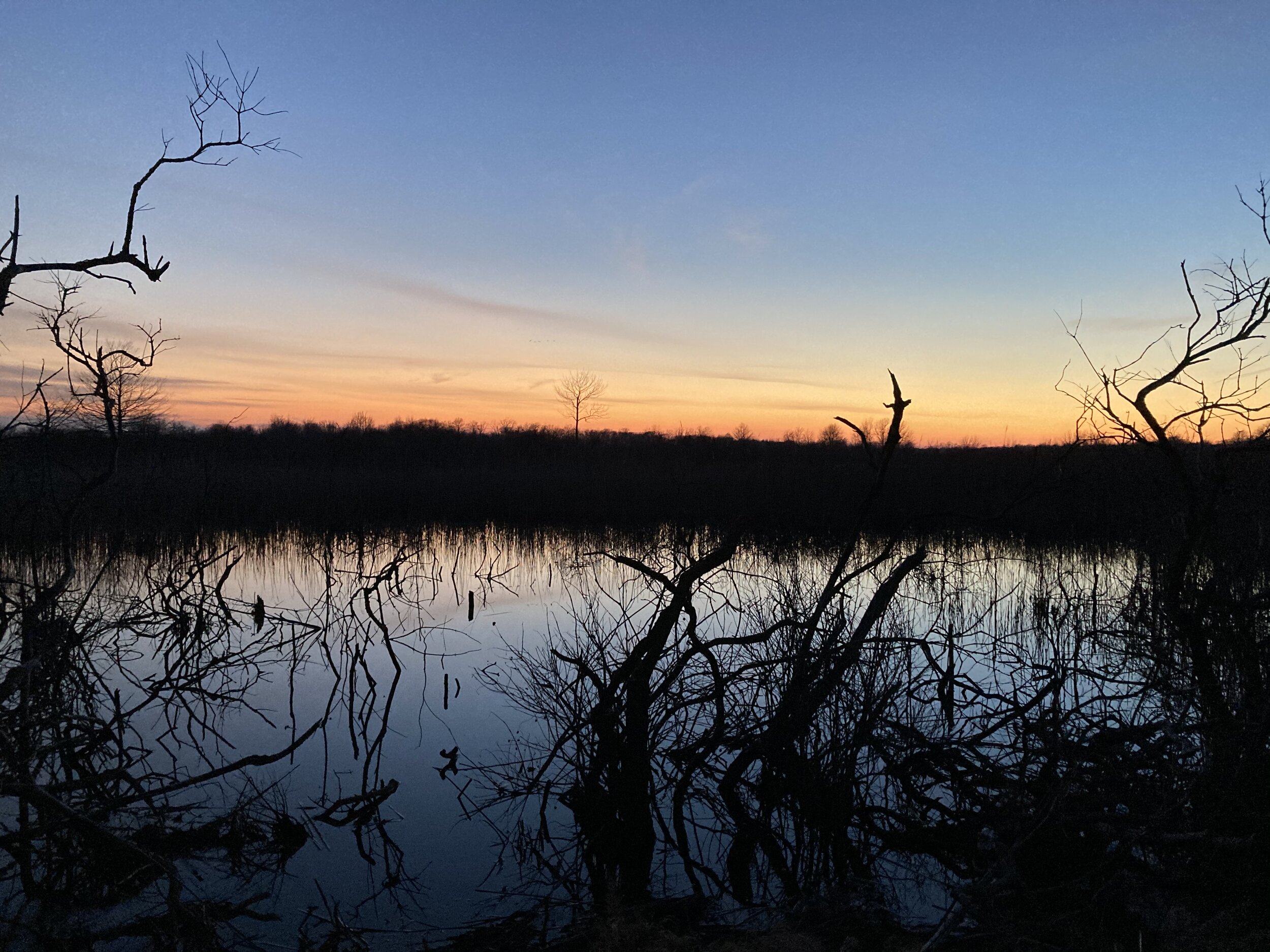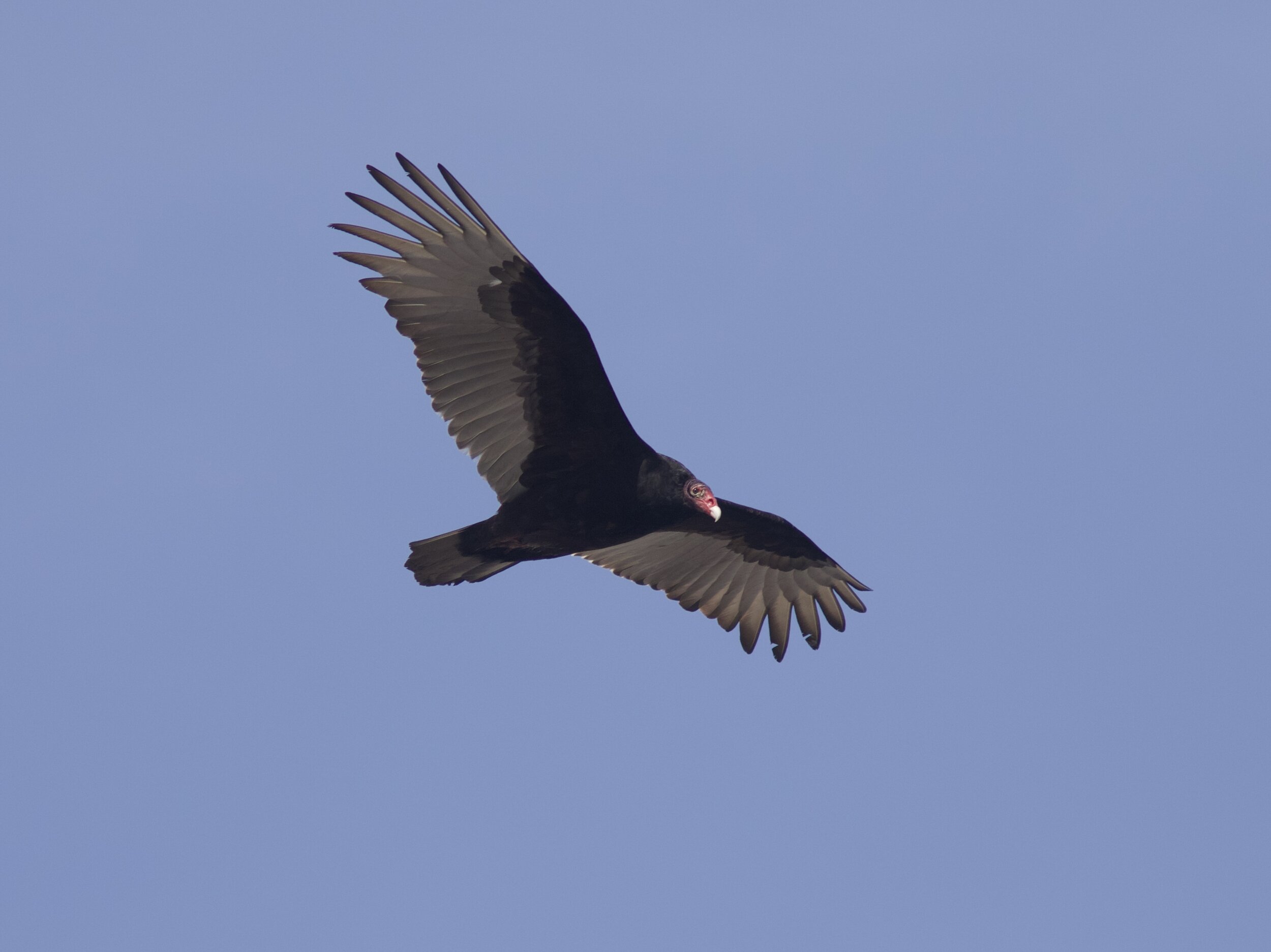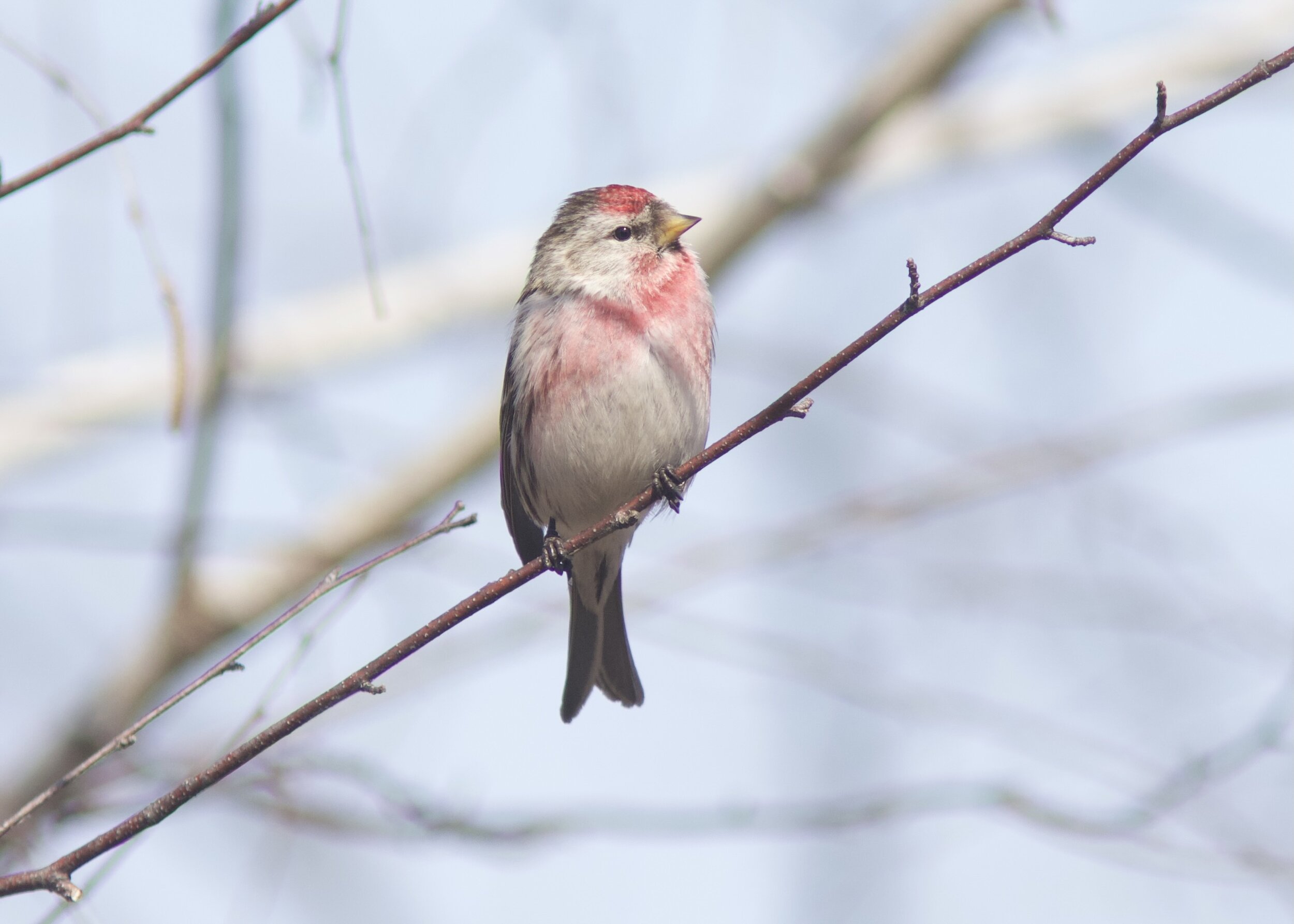2021 Spring Waterbird Monitoring Season Updates
Week Two: March 6th- March 12th, 2021
GENERAL OVERVIEW OF THE PERIOD: The second week of Erie Bird Observatory’s 2021 Spring Waterbird Monitoring season saw over a dozen new arrivals as well as dramatic changes in the ice conditions at the park. Near all-time record daily highs (70F) occurred, which eliminated ice from most locations in the park. In fact, many of the heavily iced over small interior ponds are quickly starting to become ice-free as well. The morning of the 8th started off at 28F and by the 10th and the 11th it was in the upper 60s for most of the day. These warm, strong, southerly winds have brought thirteen new arrivals to the park: Brown-headed Cowbird on the 6th, Northern Harrier, Rusty Blackbird, Black Vulture, Sharp-shinned Hawk, and Rough-legged Hawk on the 8th; Sandhill Crane, American Woodcock, Wilson’s Snipe, and Eastern Meadowlark on the 9th; Field Sparrow, Eastern Towhee, and Cackling Goose on March 11th. The 100th species of the year for the park occurred on March 8th and, at the time of writing this, we are now up to 108 species for the year. There have been some good to excellent morning flights on several days, with highlights below. More than 80,000 birds have been observed over the past 5 mornings. March 9th was the highlight of the period, and a link to that eBird checklist is here: https://ebird.org/checklist/S83108496
Daily Summaries
MARCH 8th: Good numbers of Canada Geese flew north and east, with a total of 817 for the morning. Unfortunately, most were really distant, resulting in no other species detected. Tundra Swans had a decent flight of 153 birds, while only 3 Killdeer flew by. A male Northern Harrier flew out over the lake early in the morning. The first triple-digit flight of American Robins occurred, with 118 birds. Icterids were the dominant part of the flight, with Red-winged Blackbirds leading the way (7,530), followed by Common Grackle (2,120), Brown-headed Cowbird (50), and the first Rusty Blackbirds of the season (5).
MARCH 9th: Very light southerly winds lead to the best flight of the period, with just over 24,000 birds observed during that morning alone. Canada Geese moved in moderate numbers (669), while just 25 Tundra Swans flew by. Twenty-six Mourning Doves was the first light movement of the species, and two Sandhill Cranes, well to the south, were probably the most notable birds of the flight. Killdeer (75) had their first push, while American Crow (117) Horned Lark (2), and Eastern Bluebird (4) were in surprisingly low numbers. European Starling (1,670), American Robin (320), House Finch (41), and Eastern Meadowlark (5) all had their best flights of the season thus far. Likewise, icterids did as well, with Red-winged Blackbird (9,320), Common Grackle (7,760), Brown-headed Cowbird (1,440), Rusty Blackbird (5), and blackbird spp. (2,460). A nice evening flight of Red-winged Blackbird (5,700), Common Grackle (8,600), Brown-headed Cowbird (900), and Rusty Blackbird (3) occurred as well.
MARCH 10th: There was a decent, but high, flight on the morning of the 10th, but exhaustion from the previous day only led to a partial count. During that time, highlights included Canada Goose (250), Tundra Swan (40), Killdeer (9), European Starling (750), House Finch (22), Red-winged Blackbird (3,400), Brown-headed Cowbird (700), Common Grackle (3,500), and blackbird spp. (6,100)
MARCH 12th: The flight was the highest I’ve ever seen anywhere, with Killdeer (12), Eastern Meadowlark (2), blackbird spp. (1,120), and Common Redpoll (12) most notable. Fortunately, there was an excellent gull flight heading west for the better part of 3 hours. Nearly all of the expected (for this time of year) gull species flew past including Herring (2,175), Ring-billed (2,078), Bonaparte’s (15), Great Black-backed (11), Lesser Black-backed (2), and Iceland (2).
Overall Summaries
TRAIL CONDITIONS: They are drying up fairly quickly but still have muddy/flooded sections. Gull Point is dry and accessible via the beach.
WATERFOWL: Nearly every species of waterfowl increased during the period.
Canada Goose peaked on the 8th with 1,086 birds. 819 were detected the following day. Unfortunately, the flight lines were mostly too distant to pick out anything, but Jerry McWilliams, et al. had 2 Cackling Geese flyover with some Canada Geese on the 12th. Tundra Swans peaked on the 8th, with 219 birds. However, less than 50 have been present the past few days, predominantly in Thompson Bay, Long Pond, and, to a much lesser extent, Misery Bay. Peak daily dabbling duck counts during the period include: Wood Duck (15), Northern Shoveler (18), Gadwall (96), American Wigeon (175), Mallard (302), American Black Duck (118), Northern Pintail (57), and Green-Winged Teal (27). It is pretty incredible that Blue-winged Teal has still not been detected. Peak daily numbers of diving/sea ducks during the period include: Canvasback (2,500) Redhead (1,743), Ring-necked Duck (500), Scaup (4,150), Surf Scoter (3), Black Scoter (1), Long-tailed Duck (2-Perry Monument), Bufflehead (375), Common Goldeneye (1,570), Hooded Merganser (92), Common Merganser (429), Red-breasted Merganser (512), and Ruddy Duck (30).
The daily warmer temperatures/sunny conditions have brought a substantial increase in visitation to the park throughout many of the best areas for waterfowl, including in several areas that I did not expect fishing boats to be able to get to this early in the season. As a result, in recent days most of the dabbling ducks have been very spread out, often concealing in vegetation, rather than being exposed in the ice-free parts of the water. Likewise, with the lack of ice, and more human activity on the Bay, many diving ducks are spread out quite a bit now and seem to be in much lower numbers. Some of these divers have moved on with the warmer temps, but there may be significantly reduced numbers as soon as this upcoming period. However, with temps dropping (back to near-average for this time of year) there may be less activity on the interior, and dabbling ducks hopefully have yet to reach their peaks. Thompson Bay, Swan Cove, along the trail to Gull Point, and Long Pond, between Boat Launches 4 and 5, are the current best bets for most waterfowl.
GREBES THROUGH CRANE: The Eared Grebe continued through the 10th and may no longer be present. A lone Pied-billed Grebe is occasionally being seen, while Horned Grebe is slowly starting to increase, with multiple birds present. Twenty-eight Mourning Doves on the 9th was the most during the period. American Coot slightly decreased, with a peak count of 34 on the 9th. Sandhill Cranes (2) flew past on March 9th.
SHOREBIRDS, GULLS AND TERNS: Two more shorebird species were detected during the period, both on the 9th. American Woodcock was heard on several nights, with a peak of 8 birds on the 10th. No flight displays have occurred as of yet. A single Wilson’s Snipe was at Thompson’s Pool. Killdeer peaked on the 9th, with 77 birds. Bonaparte’s Gulls are slowly increasing and are currently most reliable at Leo’s Landing. Thousands of Ring-billed Gulls continue throughout the park, but are becoming more concentrated. Thousands of dead fish throughout Marina Lake are attracting thousands of gulls, and usually 3 species are present. Great Black-backed and Lesser Black-backed Gulls became more prevalent during the period, with a peak of 17 individuals of the former and 3 of the latter. Iceland Gull was detected on 3 different days and Jerry McWilliams and Debbie Beer each had a Glaucous Gull.
LOONS THROUGH HERONS: Double-crested Cormorant (peak of 20) and Great Blue Heron (peak of 30) continue to be the only species detected in this grouping. The latter is decreasing.
RAPTORS: Two Black Vultures were the clear highlight of the group, spotted by Jerry McWilliams on March 8th. Northern Harrier, Sharp-shinned, and Rough-legged Hawk were all new arrivals, also first detected on the 8th. The two best days during the hawk count were the 10th (519 raptors) and 8th (442 raptors). Other notable peak numbers during the period detected by Jerry include: Turkey Vulture (435), Bald Eagle (11), Red-shouldered (29), and Red-tailed (68). More individual daily/monthly details can be found here: http://hawkcount.org/month_summary.php?rsite=671
KINGFISHER THROUGH LARK: Horned Lark is now daily, but only peaking at 14 birds during the period. American Crow peaked at around 200 individuals during the period. Woodpeckers are drumming much more frequently now.
SWALLOW THROUGH SNOW BUNTING: On the warmer days a few Winter Wrens have burst into full song. European Starling peaked on the 9th with 2,270 individuals. Eastern Bluebird continues in surprisingly low numbers, with a peak of just 5 on the 8th. American Robins have increased and are starting to sing throughout the park. They are even starting to appear along the roadside edges and peaked on the 9th with 325 birds. House Finch is consistent in morning flight, with a peak of 52 birds for the day on the 9th. Likewise, Common Redpoll have been flying over the last few mornings. However, a flock of 46 redpoll near the middle of Dead Pond Trail on the 8th was a nice surprise. One female redpoll in this group was a potential Hoary, but took off before it could be conclusively determined. A lone Snow Bunting has been at Gull Point for a few days, which is somewhat rare to see one of these by itself.
SPARROWS AND BLACKBIRDS: Song Sparrows had an excellent day on March 11th with 339 individuals. Mixed in was the first Field Sparrow of the season and the first Eastern Towhee of the season was heard near the picnic shelters. Incredibly, less than 10 individuals of both American Tree Sparrow and Dark-eyed Junco have been detected thus far. Other species’ peak daily totals during the period include: Eastern Meadowlark (5), Red-winged Blackbird (18,470), Brown-headed Cowbird (2,340), Rusty Blackbird (8), and Common Grackle (16,360).
Other Assorted Sightings (non-avian)
MAMMALS: Muskrat have become more prevalent, while a beaver was only seen on one day. Multiple squirrel species and chipmunks have become more active as well. Many white-tailed deer.
FROGS AND TOADS: The first Spring Peeper was definitively detected on March 7th. They have been calling nearly every day since then, with a peak of 17 calling, primarily during the day, on the 17th. They can be heard on a variety of trails.
TURTLES: Two Painted Turtles and a lone Snapping Turtle were both first observed on the 11th.
TICKS: It’s quite unfortunate, but yes, ticks have become active. I had a single Deer Tick on the 11th along Dead Pond Trail. Granted, I wasn’t wearing any form of repellent this early in the season.
Up Next…
BEST OF THE NEXT 5 DAYS/WEATHER: It looks like we will be in for a slower period of migration, with only Wednesday, the 17th, likely to produce any kind of substantial migration. The woods should remain similar to what they’ve been like in the winter. However, American Robins, blackbirds, and Song Sparrows will all be in more areas than they were the past few weeks.
EXPECTED NEW ARRIVALS: During the next 5 days it is likely that Blue-winged Teal and Fox Sparrow will arrive. Given the forecast, it is unlikely that Tree Swallow will arrive, but if they do, it will most likely be on Wednesday.
